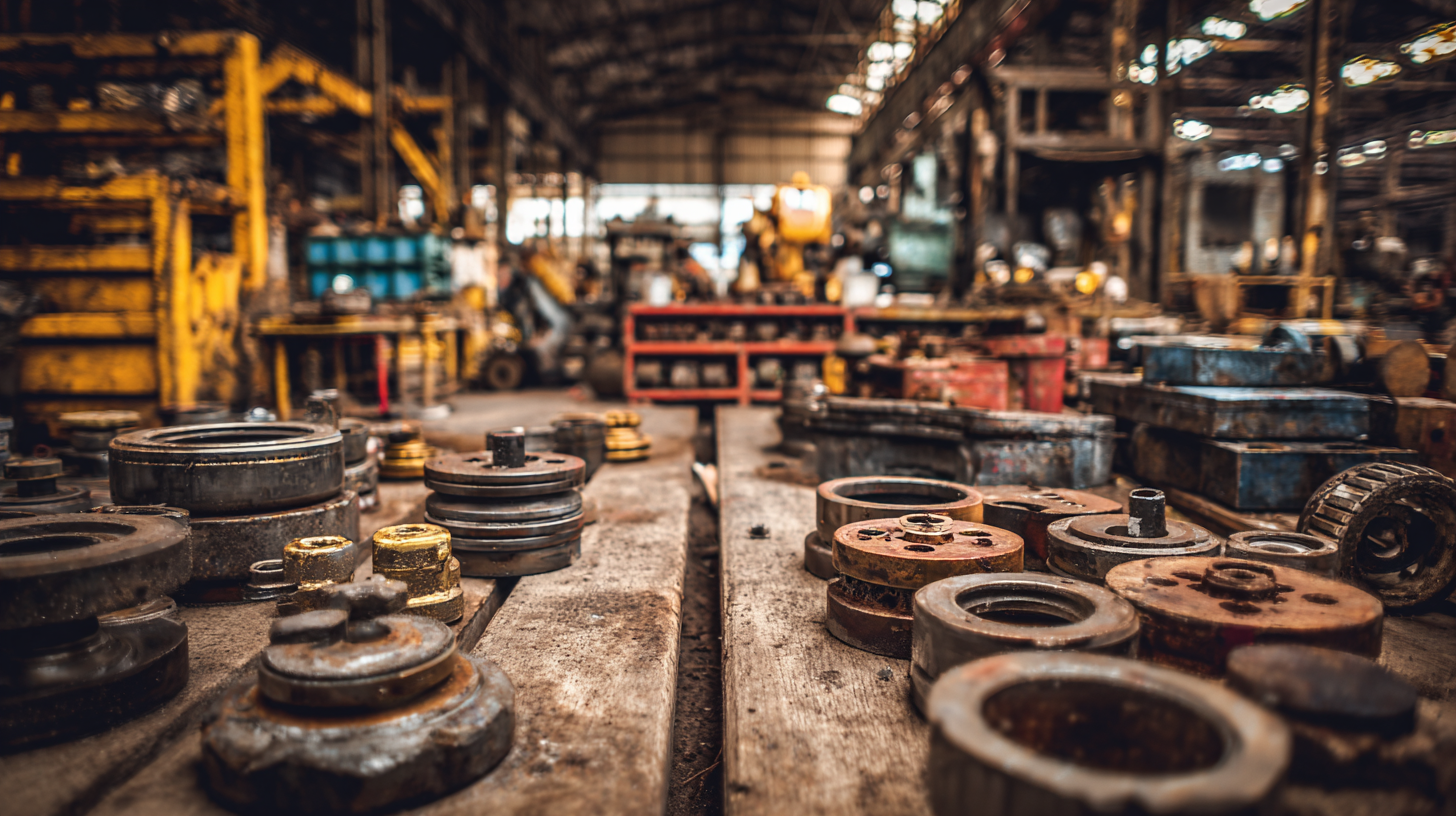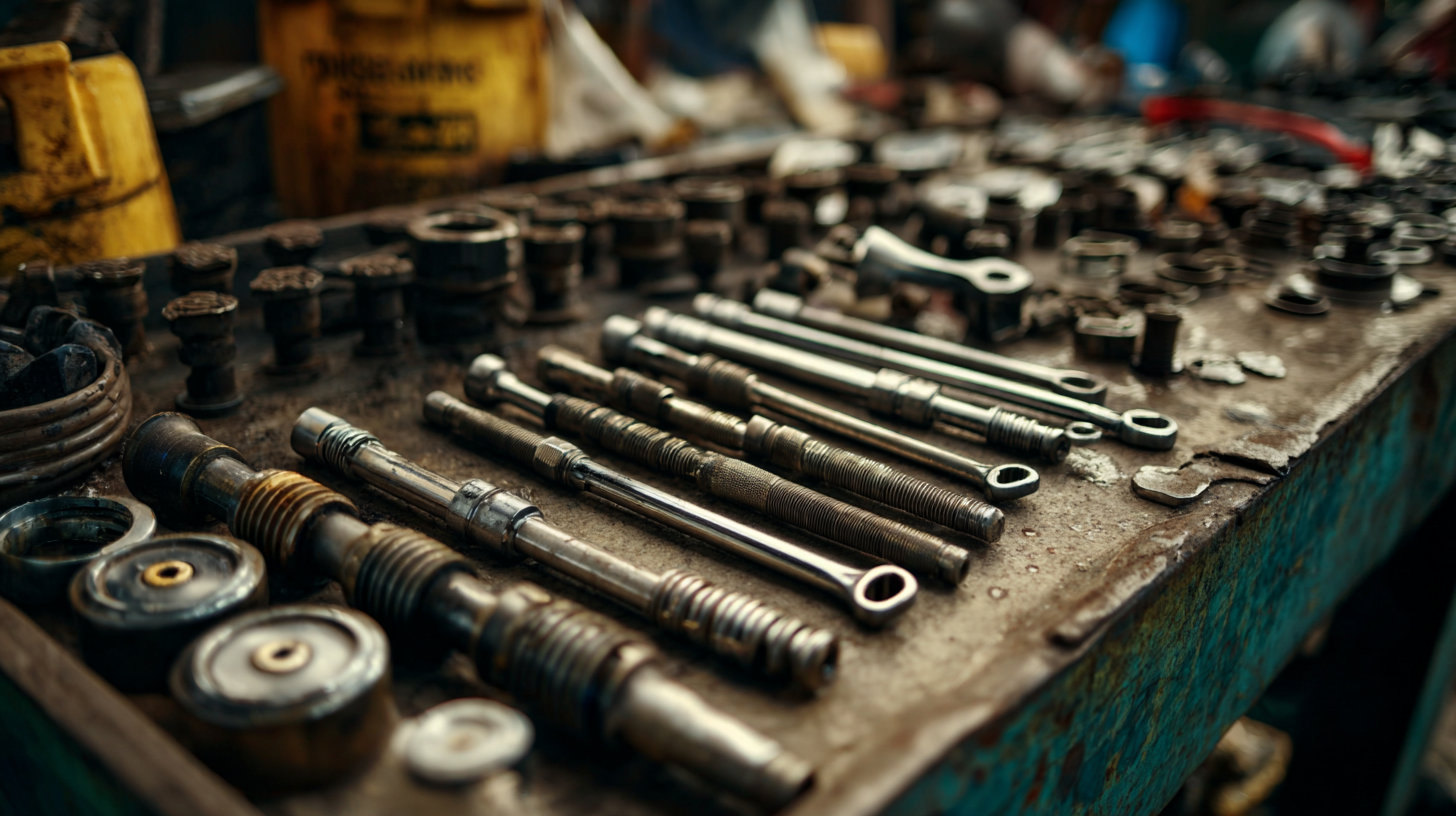Leave Your Message
-
Phone
-
E-mail
-
WhatsApp
In the ever-evolving landscape of equipment maintenance, the integrity of Spare Parts is paramount. Research indicates that counterfeit and substandard Spare Parts can account for up to 15% of maintenance-related failures, leading to significant operational downtime and increased costs. The global market for aftermarket Spare Parts is projected to reach $600 billion by 2024, underscoring the critical need for efficient identification of genuine components. As equipment reliability becomes increasingly crucial, professionals must develop a keen eye for distinguishing authentic Spare Parts from inferior alternatives. In this guide, we will explore effective strategies and best practices for ensuring that your equipment is supported by high-quality Spare Parts, ultimately enhancing performance and longevity.

Identifying Genuine Spare Parts for your equipment is crucial to maintaining performance and extending lifespan. One of the key characteristics of authentic spare parts is their manufacturing quality. According to a report by the Automotive Aftermarket Suppliers Association (AASA), around 50% of failures in machinery can be traced back to the use of counterfeit or inferior components. Genuine parts often undergo rigorous testing to adhere to industry standards, which counterfeit versions typically neglect.

Another significant feature is traceability. Genuine spare parts usually come with proper documentation and tracking throughout their supply chain. According to a study by the International Organization for Standardization (ISO), parts with comprehensive traceability reduce the risk of failure by as much as 30%. Additionally, original equipment manufacturers (OEMs) provide detailed specifications, ensuring compatibility and performance. By focusing on these key characteristics, such as manufacturing quality and traceability, businesses can effectively identify and procure genuine spare parts, ultimately safeguarding their equipment and operations.
When it comes to maintaining equipment, the quality of spare parts is essential for optimal performance and longevity. Quality certification plays a crucial role in ensuring that the parts you purchase meet industry standards for durability and reliability. Recognizing certified parts can save time and costs associated with frequent repairs and replacements.
**Tips:** Always look for spare parts that come with a quality certification label. This indicates that the manufacturer adheres to strict industry standards, providing you with peace of mind about the authenticity and functionality of the components. Additionally, seek out vendors known for their reputation in supplying certified products, as this reduces the risk of counterfeit parts entering your inventory.
Another strategy is to familiarize yourself with the certifications relevant to your equipment's industry, such as ISO or CE marks. Understanding these certifications can help you quickly identify reliable parts during your purchase journey and guide you in making informed decisions. By prioritizing quality certification, you enhance not only the efficiency of your equipment but also your overall operational success.
In today's fast-paced industrial environment, the importance of utilizing technology to verify the authenticity of spare parts cannot be overstated. According to a report by MarketsandMarkets, the global counterfeit parts market is projected to reach $452 billion by 2025, highlighting a significant threat to industries that rely heavily on spare parts for maintaining operational efficiency. This potential for counterfeit components necessitates the adoption of advanced technology for quick verification processes.
One effective solution is the use of blockchain technology, which ensures an immutable record of a part's chain of custody from the manufacturer to the end-user. This can significantly reduce the chances of counterfeit parts infiltrating supply chains. Additionally, AI-driven image recognition software can analyze parts' characteristics in real-time, helping technicians make informed decisions on the fly. A recent study from Accenture found that 73% of supply chain executives believe that digital technologies enhance their ability to detect counterfeit parts. By integrating these technologies, companies can streamline their verification processes, ultimately safeguarding their equipment and reducing the risks associated with substandard parts.
| Spare Part Type | Verification Method | Authenticity Indicators | Technology Utilized |
|---|---|---|---|
| Engine Oil Filter | QR Code Scanning | Manufacturer Logo, Hologram | Mobile App, Cloud Database |
| Brake Pads | Online Part Number Check | Product Weight, Color Consistency | Web Portal with Barcode Reader |
| Fuel Injectors | Serial Number Validation | Engraved Codes, Packaging Quality | Tracking Software |
| Alternator | Visual Inspection & Test | Component Finish, Power Rating | Diagnostic Tools |
| Timing Belts | Manufacturer’s Website Confirmation | Material Composition, Markings | Online Verification Tools |
When it comes to identifying genuine spare parts for equipment, recognizing common red flags in packaging and labeling is crucial. According to a report by the International Organization for Standardization (ISO), approximately 30% of industrial equipment failures are attributed to the use of counterfeit parts. One of the most common indicators of counterfeit products is poor packaging quality. Genuine manufacturers invest significantly in high-quality packaging that is often tamper-proof and features holograms or unique identifiers. If the packaging appears flimsy, lacks identifiable branding, or shows signs of damage, it may not be a trustworthy source.
Additionally, labeling plays a critical role in determining authenticity. A study from the European Commission reveals that inaccurate labeling can mislead consumers and lead to significant losses, estimated at around €50 billion annually in the EU alone. Genuine parts typically have clear, concise labeling that includes the manufacturer's name, part number, and compliance badges. Red flags include missing information, incorrect spellings, or labels that do not match the product specifications. By staying vigilant and scrutinizing both packaging and labels, equipment operators can help mitigate the risks associated with counterfeit spare parts and ensure optimal performance of their machinery.
Building reliable supplier relationships is crucial for the efficient procurement of genuine spare parts for your equipment. Establishing trust with suppliers can lead to better communication, ensuring that you receive authentic parts that meet your equipment’s specifications. This involves thorough vetting of suppliers, including checking their certifications, reputation in the industry, and customer reviews. Building a rapport with suppliers can also encourage them to provide insights on product availability and new offerings, ultimately benefiting your operations.
Maintaining open lines of communication is vital for nurturing these relationships. Regularly engaging with suppliers through meetings or calls allows for a clearer understanding of your needs and helps suppliers anticipate your requirements. Additionally, consider developing partnership agreements that outline expectations, such as quality standards and delivery timelines. This collaborative approach not only fosters loyalty but also empowers both parties to address potential issues quickly, ensuring that your equipment runs smoothly with genuine spare parts sourced efficiently.







